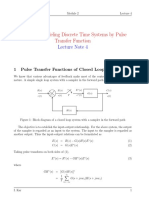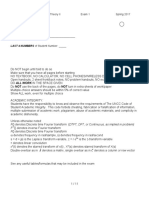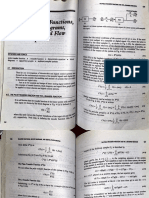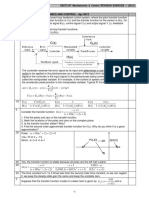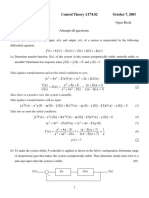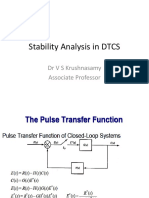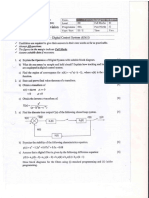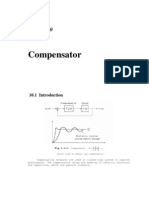0% found this document useful (0 votes)
298 views8 pagesDigital Control Systems Guide
The document provides examples of obtaining pulse transfer functions for open-loop sampled-data systems with different configurations. Example 1 derives the pulse transfer function for a system with a sampler after a continuous system. Example 2 considers a system with the sampler before the continuous system. Example 3 adds a digital filter to the system from Example 1. It then determines the step response of the system from Example 3 for a specific digital filter transfer function.
Uploaded by
Tanjid HossainCopyright
© © All Rights Reserved
We take content rights seriously. If you suspect this is your content, claim it here.
Available Formats
Download as PDF, TXT or read online on Scribd
0% found this document useful (0 votes)
298 views8 pagesDigital Control Systems Guide
The document provides examples of obtaining pulse transfer functions for open-loop sampled-data systems with different configurations. Example 1 derives the pulse transfer function for a system with a sampler after a continuous system. Example 2 considers a system with the sampler before the continuous system. Example 3 adds a digital filter to the system from Example 1. It then determines the step response of the system from Example 3 for a specific digital filter transfer function.
Uploaded by
Tanjid HossainCopyright
© © All Rights Reserved
We take content rights seriously. If you suspect this is your content, claim it here.
Available Formats
Download as PDF, TXT or read online on Scribd
/ 8
